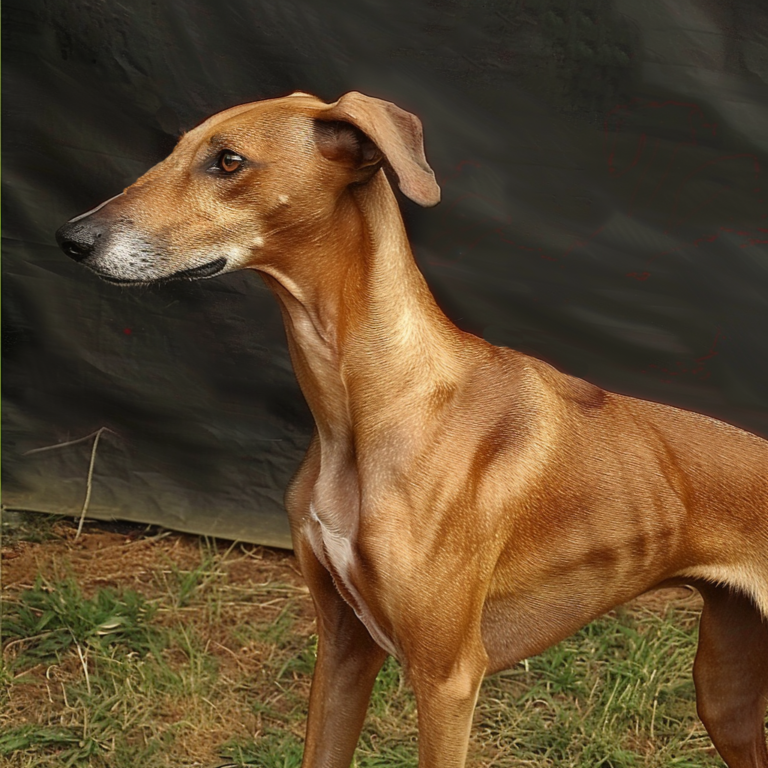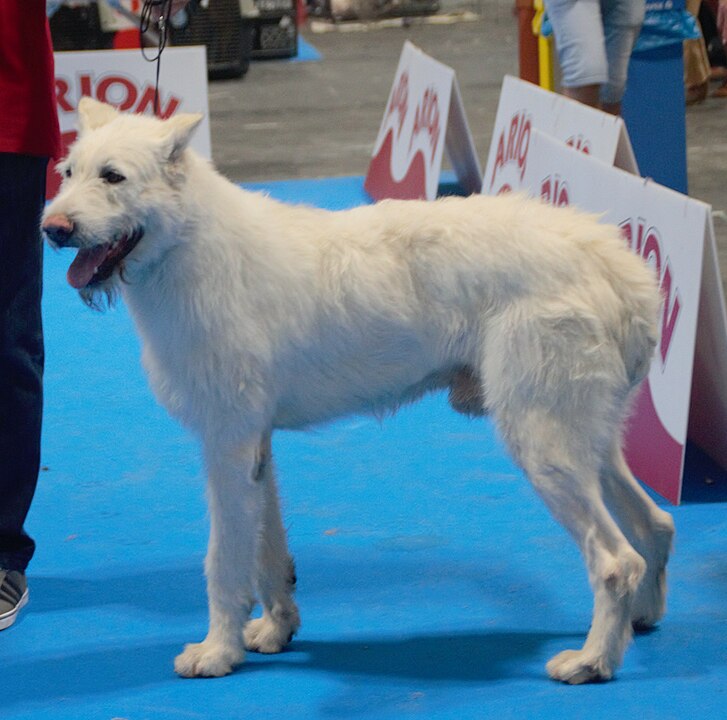The Shanxi Xigou (prouncounced see-gow) is a rare Chinese sighthound whose ancestors date back thousands of years. In fact, drawings of similar dogs have been depicted on the walls of an ancient Qin Dynasty prince’s tomb as long as 2500 years ago! They were used by emperors to hunt “royal” game and some say that this breed is the predecessor to all sighthound breeds. Recognized only in China (and only since 2017), the breed will be petitioning to be accepted into the FCI once the population is larger. The name comes from Zhang Xian, a Chinese god who would often take the form of a dog.
The Shanxi is capable of doing guard dog duty along with his skills as a hunter and companion animal. Like most sighthounds, he is quite independent and even aloof to strangers, although quietly affectionate to those whom he knows and loves. As an active athlete, the Xigou needs regular exercise every day. A daily walk on lead (on lead because of high prey drive), supplemented by free running in a securely fenced yard is usually sufficient. He should also be given tasks which will promote both mind and body stimulation so dog sports such as rally or agility are great! 
Because of his independence and stubbornness to following commands, the Shanxi Xigou takes patience to train. This said, he is intelligent so an owner willing to put in the time and stay consistent will often see results.
One of the physical characteristics of the Shanxi is an unusual roman “ram’s head” type face. The standard actually states that two type of heads are allowed and the ram’s head shape is less preferred, however this shape is common enough that it is worth mentioning as a distinguishing feature. The breed also shares the typical lean frame of most other sighthounds. Like feathered Salukis (in fact, the breed has been called the Chinese Saluki), they have a short coat with longer fringes on the ears and tail. Colors include black, blue, silver, cream, white, red, and fawn. Brindle patterning is acceptable. A white tip at the end of the tail is a disqualification.



